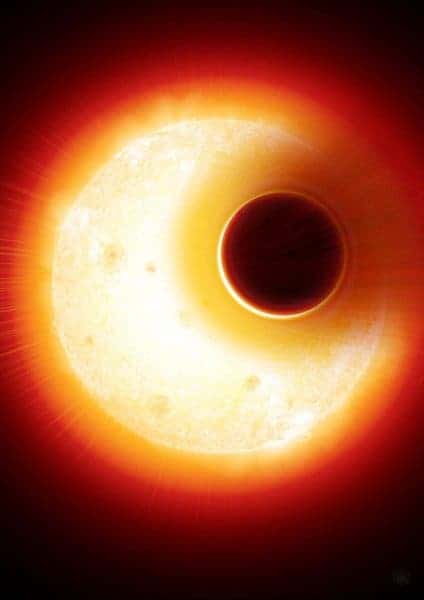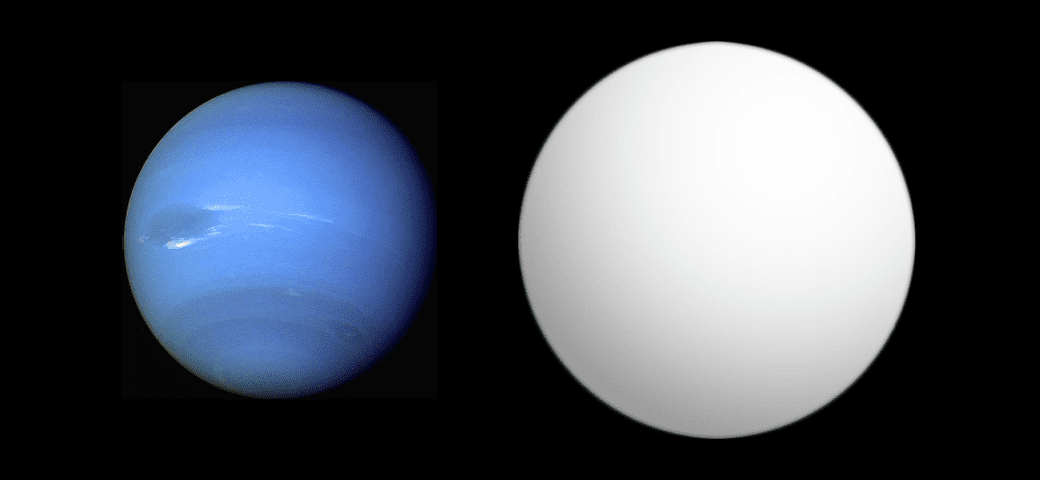It’s the first time anything like this has ever been observed and could teach us a lot about the hottest exoplanets ever discovered.
The planet HAT-P-11b, also called Kepler-3b, was discovered in 2009 with the Kepler telescope. Like most exoplanets, it was discovered through the transit method — we didn’t see it directly, but as the planet passes in front of its star, it creates a slight dim point, and from that, several of its characteristics can be calculated. Because planets themselves don’t generate light, it is typically much easier to detect them with the aid of their star.
For instance, in September 2014, NASA reported that HAT-P-11b is the first Neptune-sized exoplanet known to have a relatively cloud-free atmosphere. But other than that, nothing stood out about this planet — until now. An international team of researchers, led by Jessica Spake and Dr. David Sing from the University of Exeter, has found evidence that inert gas is escaping from the atmosphere of the exoplanet.
Although helium is rather rare here on Earth, it’s essentially ubiquitous in space — second only after hydrogen. However, although it is so common, it has only been recently observed in the atmosphere of a gaseous giant. Helium was long-predicted to be one of the most common gases on giant exoplanets, but observations have proven quite challenging. Helium was only observed on an exoplanet once before, in a study also led by Jessica Spake that used the Hubble telescope. Researchers also found that the helium has swollen up the planet’s atmosphere, much like a helium balloon inflates. Spake explains:
“This is a really exciting discovery, particularly as helium was only detected in exoplanet atmospheres for the first time earlier this year. The observations show helium being blasted away from the planet by radiation from its host star. Hopefully we can use this new study to learn what types of planets have large envelopes of hydrogen and helium, and how long they can hold the gases in their atmospheres.”

Artist’s impression of the exoplanet HAT-P-11b with its extended helium atmosphere blown away by its star, an orange dwarf star that is smaller but more active, than the Sun. Image credits: Denis Bajram.
Their observations were complemented and confirmed by numerical simulations, which allowed researchers to track the trajectory of these helium atoms. Vincent Bourrier, the co-author who carried these simulations, says that Hat-P-11b must be quite a hellish place.
“Helium is blown away from the day side of the planet to its night side at over 10,000 km/h,” Bourrier explains. “Because it is such a light gas, it escapes easily from the attraction of the planet and forms an extended cloud all around it.” This gives HAT-P-11b the shape of a helium-inflated balloon.
This would make it one of the hottest exoplanets ever discovered, and it also shows that this type of observation, once thought to be possible only with space telescopes, can also be done from the surface of our planet (observations for this study were carried out with a spectrograph installed on the 4-meter telescope at Calar Alto, Spain).
“These are exciting times for the search of atmospheric signatures in exoplanets,” says Christophe Lovis, senior lecturer at the the University of Geneva (UNIGE) and co-author of the study. “This result will enhance the interest of the scientific community for these instruments. Their number and their geographical distribution will allow us to cover the entire sky, in search for evaporating exoplanets,” concludes Lovis.
R. Allart et al. Spectrally resolved helium absorption from the extended atmosphere of a warm Neptune-mass exoplanet. Science, 2018 DOI: 10.1126/science.aat5879










